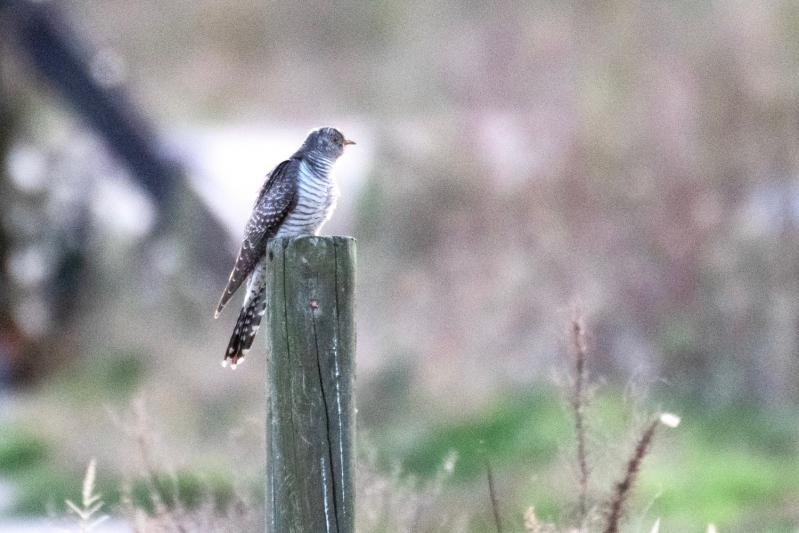A common cuckoo, a bird known in the United States only for its famous “cuckoo clock” sound, was spotted on Oct. 23 in Riverhead.
If the sighting is approved by the New York State Avian Records Committee, it will mark the first time the bird has ever appeared in New York State. The find resulted in hordes of birdwatchers descending on Roanoke Avenue, about half a mile south of Reeves Avenue, where it was first located.
A special “hotspot” created on the website eBird, quickly amassed checklists from 175 birders, which is likely a fraction of the number who saw the bird.
Lists from the Riverhead area were still showing up with uncommon frequency on Tuesday, but the bird had apparently departed by then. It was last seen on Saturday.
Jay Rand, whose photographs often illustrate the “On the Wing” column in this newspaper, was visiting his in-laws in Laurel when the news came through the New York State Rare Bird Alert thread on Discord.
“Jay McGowan sent the alert out at 4:30 on Thursday,” he said. “I got permission from my family and left right away. A group of local birders and I were all there and looking, but the sun was fading, and it wasn’t where it was described.”
They gave up and began walking back to their cars.
“We were feeling dejected,” said Mr. Rand. “If you don’t find a rare bird right away, the chances of re-finding it are slim. I just kept stopping and scanning. We were all looking on top of the fenceposts, because they tend to sit on top of posts, but then there it was, sitting on the ground. I almost had a heart attack when I re-found it.”
The bird was the 345th species Mr. Rand has seen in Suffolk County.
The common cuckoo’s normal breeding range is across Europe, up to the Nordic countries, and across Asia. It winters in Africa. It doesn’t build its own nest. Instead, it lays its eggs in other birds’ nests, and they unwittingly become foster parents to its young.
On the East End we have two native cuckoos: the yellow-billed and the less common black-billed cuckoo. Both are in steep decline.

